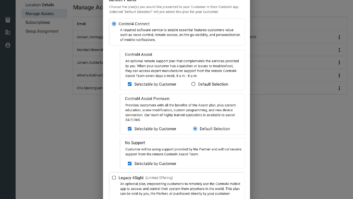Could you benefit from the ability to get more done in less time? What if you were able to do this while simultaneously reducing feelings of stress and anxiety? Want to increase your efficiency and find a sense of relaxed clarity and focus in the midst of your chaotic home technology business? It’s possible with a well-known productivity framework called “Getting Things Done” (GTD).
Having practiced GTD for years in both my personal life and career in the home technology field, I swear by the results. Whether you’re a salesman looking to close more deals, a project manager looking to reduce stress, or a company owner looking to take your business to the next level, GTD is a simple and powerful methodology you should know about.
As most people who have worked with me for any length of time can attest, I am an unapologetic evangelist for GTD. So I thought I’d take a break from the more typical topics covered here and share a quick rundown on how this productivity system works and how it can help you…
What is GTD?
Getting Things Done (GTD) is a productivity method designed to help bring order to your never-ending list of to-dos. It was invented by David Allen who first outlined the concept in his 2001 international best selling book titled Getting Things Done (a revised edition was published in 2015). The book is an international bestseller published in over 28 languages and heralded by TIME magazine as “the defining self-help business book of its time.”
Not a specific piece of software or prescriptive set of tools, GTD is, instead, a set of principles you can apply in a variety of ways. These principles are designed to help you alleviate feelings of overwhelm, apply increased focused to the task at hand, and, as the name implies, get more stuff done.
GTD can be broken down into the following 5 steps:
1. Capture
The foundational building block on which the rest of GTD is built, you must start by capturing 100 percent of what is vying for your attention. As famously stated by David Allen, “Your mind is for having ideas, not holding them.”
An important client emailed with a question about their latest service invoice. An architect left a voicemail about a new project. An employee needs you to review a document. Your spouse needs you to grab milk on the way home. You’ve got to take your kids to soccer practice tonight. The list goes on and on. Too many people rely on an array notes, memos, and reminders scattered across several different mediums to remember and prioritize this neverending list of to-dos. Or worse yet, they simply let them all rattle around in their brain.
GTD rests on the idea that all of these “things” must instead be placed into a single, trusted system. GTD does not dictate what exactly this system should be. Although the GTD website does provide a list of common tools, in my opinion, they are missing one of the best out there — Trello, which I have personally used with great success for years. Whether you decide to use software or plain old pen and paper, capturing 100 percent of what is vying is the vital first step in the GTD process.
Also by Jason Griffing: Why Best Buy’s “Total Tech Support” Is Great News
2. Clarify
Next, take everything you capture and ask yourself one question: “is this actionable?” If not, trash it or, if appropriate, move it to a reference area of your GTD system. For all actionable items, break each one down to a very specific next step.
Specificity is the key here. For example, do not place an action item in your GTD system called “Fix Mr. Smith’s living room TV.” Instead, the action item should be something such as “Call Mr. Smith and schedule an appointment” or “Request an advanced replacement for Mr. Smith’s TV from the manufacturer.”
Now, take that action step and run it through a simple decision-making process that can easily be remembered as the “three D’s”:
- Do it: Will this item take less than two minutes? Dashing off a quick email reply for example. If so, do it now
- Delegate it: Is there someone else better suited for this task? If so, delegate it right away.
- Defer it: Is this is a task that you are best suited for which will take more than two minutes to perform? Defer by setting a reminder to come back to it later.
3. Organize
Once you have clarified all of your tasks, the next step is to organize them. This is a key step that makes GTD different from other task- or time-management practices I’ve experimented with. The simplest way to understand this step is through a concept called “contexts.” A context defines the things you must have in order to carry out a given action item.
To help you understand contexts, here are some examples:
- People: Certain items may require in-person meetings with stakeholders for various projects/initiatives; sensitive or complicated conversations for example.
- Place: Other items may require you to be physically present on a job site; verifying measurements for a theater screen installation for example.
- State of Mind: Other items may require long periods of uninterrupted focus; working through a large proposal for example.
The idea is to keep various lists in your GTD system for each context. When implemented correctly, contexts help you choose which task to focus on next with confidence, freeing you from the nagging voice that asks if you’re spending your time on the right things.
For example, let’s say it’s 4:00 pm on a Thursday. Your brain is fried after a long day of fast-paced meetings. However, you’d still like to knock a few more tasks out before calling it quits. Now is probably not the best time to look at a “Deep Focus” list where action items that require prolonged periods of uninterrupted thought are kept. Instead, imagine being able to reference a curated list of “Quick Hits,” items that only require about ten minutes or less to do. Having placed items here ahead of time allows you to dive right in and get to work.
I keep just such a list and find myself referencing throughout the day — in the small windows between meetings, for example. This, of course, is only one example of contexts. However, you can see how organizing your to-dos in this way can create tremendous efficiencies in your ability to jump confidently from one task to the next.
Also by Jason Griffing: What Are You Really Selling
4. Reflect
This is a common area of failure I’ve seen in those I have tried to help implement GTD. It’s important to know that your GTD system will never go on autopilot. In the chaos of a typical work week, it’s not realistic to expect that you’ll be able to keep all of your lists, action items, and due dates in perfect order. At least once a week, plan to spend a solid 30-60 minutes reviewing your GTD system.
Part of this review process will involve simply cleaning things up. The other part of this process is a bigger picture review. Are there important projects that you failed to make progress on? How can you better protect your time next week? Do your contexts still make sense or can they be further optimized? Etc.
Taking this time to clean up and reflect on what’s working and what isn’t is vital. Even after practicing GTD for years, my system is still constantly evolving in response to changing conditions. It’s key to remember that GTD is not a rigidly defined framework, but rather a flexible set of principles that you are free to apply in a way that works best for you. Dialing in your system takes time and maintenance, but I promise you the effort is worthwhile.
5. Engage
The last step is the easiest to sum up: “simply do.” With a GTD system successfully put in place, you should find that you have increased focus to tackle the task at hand. One of the underlying tenets of GTD is that we all have too much to do and not enough time. But the real stress we experience comes from the subconscious voice in our heads questioning whether we are working on the right things at the right times.
GTD is amazingly effective at silencing this inner productivity killer. Until I discovered GTD, I did not realize just how much of my mental energy was being consumed by the nagging feeling that I was forgetting something or focusing on the wrong thing. By getting rid of this background noise, I found myself able to switch from one task to another with greater ease, clarity, and confidence. It consistently amazes me how much more I am able to get done because of this increased ability to rapidly shift between tasks and seamlessly dive in and out of periods of deep focus as my GTD system dictates.
Let’s Talk GTD…
I first read David Allen’s book over a decade ago and, right next to emotional intelligence, it has served as a foundational concept in both my personal and professional development ever since.
I cannot recommend GTD highly enough. I love engaging in conversations about how it can help anyone in any line of work or walk of life achieve greater results with less stress. If you’d like to connect and learn about the exact ways I apply GTD to my daily work, drop a comment below and let me know!







